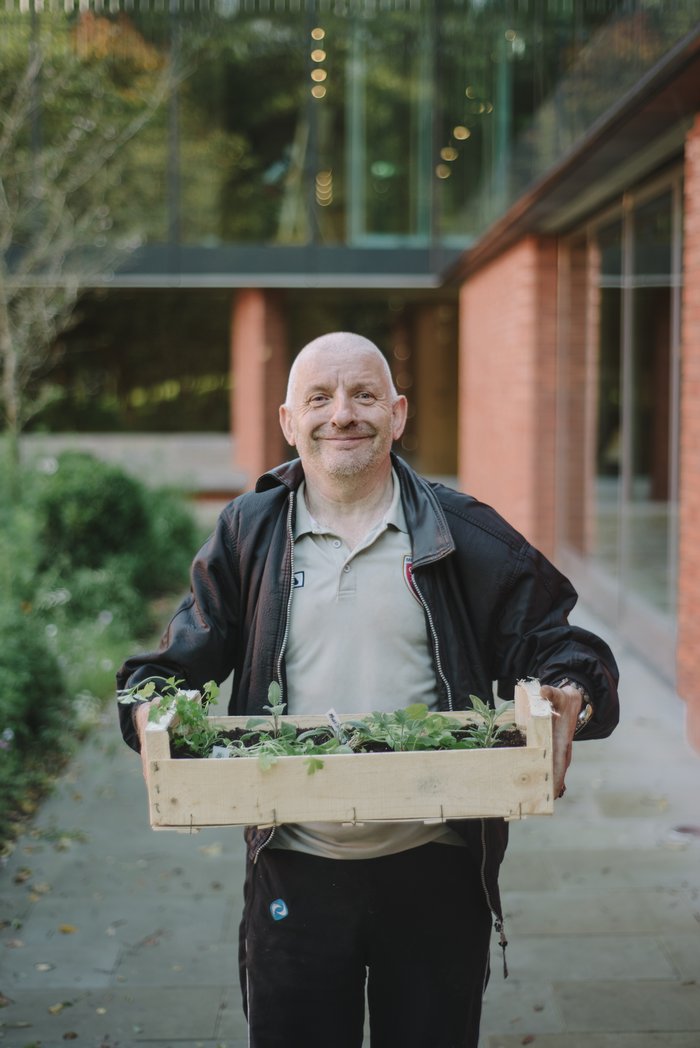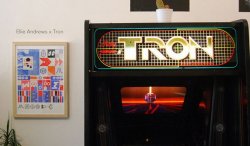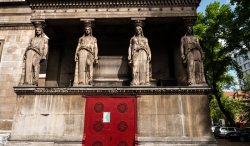- Jobs
- Open Calls
- Events
- Learning
- More
- SUBMIT
WE CHATTED WITH ESME WARD THE HEAD OF LEARNING AND ENGAGEMENT AT THE WHITWORTH GALLERY, UNIVERSITY OF MANCHESTER

ESME WARD
WHITWORTH GALLERY, UNIVERSITY OF MANCHESTER
Esme, you're the Head of Learning and Engagement at the Whitworth Gallery Manchester. For those unfamiliar with the role tell us a bit about what sorts of things you do?
I’m Head of Learning and Engagement at the Whitworth and also at Manchester Museum, both part of the University of Manchester. I lead the public-facing participatory work across both sites. For the last 5 years, I’ve worked closely with Maria Balshaw and a fantastic team at the gallery to realise an ambitious vision for the Whitworth, driving some of our most bold work to develop new audiences and transform how we work with people.
I have a large, committed and highly talented team of learning and engagement specialists, freelance artists and volunteers who work with people of all ages; including babies, schoolchildren, students and young people, families and communities, health professionals, charities and third sector organisations.
As part of the Leadership team, I set the strategic direction of our learning and engagement work and support team members, including the Visitor teams, to do imaginative, quality work that connects to and engages with all our visitors.
I work closely with curators, other arts organisations, charities and community settings, academic colleagues and participants to develop relevant partnerships, programmes, research and projects. I lead on the funding, strategic development and advocacy of these. A good example is the Cultural Park Keeper, the first role of its kind in the country. Funded by the Esmee Fairbairn Foundation, it seeks to reach new audiences and enhance wellbeing by bring art, nature and people together in our park.
I sit on several steering and advisory groups locally and nationally, such as the National Alliance for Museums, Health and Wellbeing. Within the University, I teach a Creative Learning module as part the University of Manchester’s MA in Arts Management and Museology. We’re a collaborative bunch in Manchester - I’m also the Strategic Lead (Culture) for Age Friendly Manchester and Greater Manchester Ageing Hub, working across Greater Manchester’s cultural organisations and as part of public health, to lead and develop work by, with and for older people.

What kind of opportunities and experiences should one aim to get before looking to build a career like yours?
How do you build a career nowadays? I currently juggle different roles, across organisations and sectors. Being flexible and open is more important than it ever was. Before I came to the Whitworth, I worked as a freelance practitioner across the north west and London in a wide range of organisations, large and small. I was ever curious and open and by working across so many different sites, increased my knowledge and awareness of different models and practices. I started to develop my own sense of what good looked like. I facilitated community engagement workshops, tried my hand at writing and editing, led training programmes and even did a stint as a financial administrator at the V&A. I supported an Art for the Unemployed programme at Dulwich Picture Gallery and worked in schools across South London (which I loved) and became a Pre-Raphaelite maiden as part of a living history programme in Bolton (which I loathed). I worked with toddlers and older people, met extraordinary practitioners and learnt from them along the way.
Of course, there are key skills and experiences you will need; how to motivate people, work collaboratively, knowledge, love and interest in collections, ability to communicate widely, etc..but I don’t believe you have to be a teacher or have a teaching qualification to be successful in a role like mine. You do need to love learning, care and be curious about art and people, take creative risks, be entrepreneurial and communicate your ideas with clarity and conviction.
So my best advice is to look for experiences and opportunities that enable you to do work you really care about. Learn from others. Listen. Reflect. Push yourself to be ambitious for the difference you can make. Shout about it (or better still, others shout about it).

Working in a gallery must mean your surrounded by all kinds of arts all day, what is your favourite collection at the Whitworth and why?
This is almost impossible to answer. The thing I’ve always loved about the Whitworth is its eclecticism. On my first day working in the gallery, having looked at a display of historic works on paper, including William Blake’s glorious Ancient of Days, I turned the corner and was greeted with Captain Pugwash wallpaper! From historic to contemporary textiles, wallpaper, fine art and sculpture, indoors and out, there’s too much to choose from. I suppose I’ve always loved how the Whitworth brings art, people and ideas together and it’s this that most excites me. Its why Nathan Coley’s lightwork Gathering of Strangers, which sits above the new parkside entrance, has particular meaning for me (and even more so in the current political context). I view it as a statement of intent, an invitation and welcome, reminding us that museums like the Whitworth are and should be places for everyone.

The Whitworth is a part of Manchester University what impact does the partnership have on the things the gallery does and its aims as an institution of art?
When the Whitworth first opened its doors in 1889 it was dedicated to the “perpetual gratification of the people of Manchester”. This commitment to enriching the lives of Mancunians is as strong today as ever and shared by the University. Alongside research and high quality teaching and learning, social responsibility is a core part of its vision. There is support for and a shared desire to have social impact, engage communities and be environmentally sustainable. As part of the university’s commitment to widen participation, we work with schools and young people to raise awareness of higher education and culture, progression routes and career development.
We make the most of our position within a world-class university, by drawing on the work of researchers within exhibitions and events and enriching public programmes through access to cutting edge research and critical thinking. We encourage artist-led collaborations (Cornelia Parker working with Nobel Prize winning scientist Kostya Noveselov), student engagement (student-led tours, takeovers, workshops) and research-led exhibitions. Early career researchers regularly share their findings with schools and the public. Partnerships with researchers are embedded within all learning and engagement programmes. For example, in our early years work, in partnership with ESRC International Centre for Language and Communicative Development, we are exploring the impact of galleries upon language acquisition in 2-3 year olds.

Being a part of the university, education and research plays a big part in the goals of the gallery, what can you tell us about what you're organising for the upcoming months?
Our outdoor programme is gearing up for a busy spring and summer. The Art Garden and GROW programme (horticultural wellbeing programme in partnership with mental health charities), both supported by Jo Malone London, will be in full bloom by June. There will be a new commission that brings art, people and the park together as part of Manchester International Festival in early July.
We’re also embarking on an ambitious programme to bring some of the best of contemporary South Asian art practice to audiences in the North of England. The New North and South is a three-year programme of co-commissions, workforce development and intellectual exchange. We’re working with Liverpool Biennial and The Tetley (Leeds), Colombo Art Biennale, Dhaka Art Summit, Karachi Biennale, Kochi-Muziris Biennale, Lahore Biennale and the British Council. Across Greater Manchester, we’re working with partners and organisations to explore imaginative ways to work together and reach new audiences.
Our age-friendly work continues apace as we extend Culture Champions (over 150 older people who advocate for and shape cultural activity across Manchester) and, supported by the GM Ageing hub, I’m starting to develop plans for a Centre for Arts and Ageing to bring together the best of international research and practice in this field.
Finally, on a personal note, I’m currently one of this year’s Clore Fellows so I’m spending some time away from the Whitworth. As part of my Fellowship, I’ll be with the Heritage Lottery Fund exploring how to support community-led activity and activism in heritage and landscape. It’s also a time of change for the Whitworth. We’re excited and proud that Maria is heading to Tate and we look forward to the next chapter for Manchester’s gallery in the park.
FOR MORE INFORMATION CHECK OUT http://www.whitworth.manchester.ac.uk/
INTERVIEW by HANNAH SMITH
|
CHARLIE HOOD
Art Gallery Director |
CREATIVE DEBUTS
Co-Founder of CREATIVE DEBUTS |
CRYPT GALLERY
|
Amine Naima
Artist |









